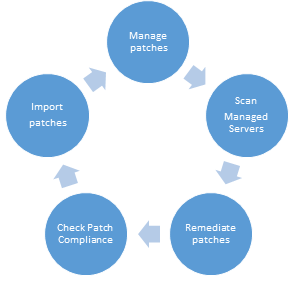Searching the Help
To search for information in the Help, type a word or phrase in the Search box. When you enter a group of words, OR is inferred. You can use Boolean operators to refine your search.
Results returned are case insensitive. However, results ranking takes case into account and assigns higher scores to case matches. Therefore, a search for "cats" followed by a search for "Cats" would return the same number of Help topics, but the order in which the topics are listed would be different.
| Search for | Example | Results |
|---|---|---|
| A single word | cat
|
Topics that contain the word "cat". You will also find its grammatical variations, such as "cats". |
|
A phrase. You can specify that the search results contain a specific phrase. |
"cat food" (quotation marks) |
Topics that contain the literal phrase "cat food" and all its grammatical variations. Without the quotation marks, the query is equivalent to specifying an OR operator, which finds topics with one of the individual words instead of the phrase. |
| Search for | Operator | Example |
|---|---|---|
|
Two or more words in the same topic |
|
|
| Either word in a topic |
|
|
| Topics that do not contain a specific word or phrase |
|
|
| Topics that contain one string and do not contain another | ^ (caret) |
cat ^ mouse
|
| A combination of search types | ( ) parentheses |
|
- Server patching
Patch management for Red Hat Enterprise Linux
HPE Server Automation patch management for Red Hat Enterprise Linux enables you to manage security and non-security patches for your Red Hat supported Managed Servers. It allows you to identify, install, and audit Red Hat package updates, keeping a high level of security across managed servers in your organization.
In HPE Server Automation, patches are the equivalent of Red Hat errata. The latter are package updates, bug fixes, and security patches for Red Hat Linux. They have been tested and approved by Red Hat, Inc. and can be found at https://rhn.redhat.com/errata/.
High-level architecture
HPE Server Automation Red Hat patching mechanism allows you to import patches from Red Hat or from other sources, scan managed servers to determine their current patching level and perform the deployment of patches. Finally, the server can be checked for compliance against the recommended set of patches.
The following figure displays the high level architecture for the HPE Server Automation Red Hat patching mechanism.

A typical Red Hat patching use case follows a well-defined process. Patches are first imported into HPE Server Automation. This is followed by an optional step where you can manage the patches. In the third step we need to determine what patches are recommended for the Red Hat managed servers. The result of this step is dependent on the patching levels of each of your managed servers. In other words, two machines with the same Red Hat platform can have different patches recommended. Once the recommended patches are found, the managed servers can be remediated. After the remediation occurs, the patched servers can be checked for compliance.
We welcome your comments!
To open the configured email client on this computer, open an email window.
Otherwise, copy the information below to a web mail client, and send this email to hpe_sa_docs@hpe.com.
Help Topic ID:
Product:
Topic Title:
Feedback:





